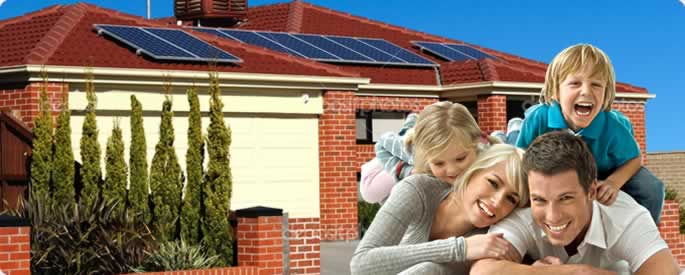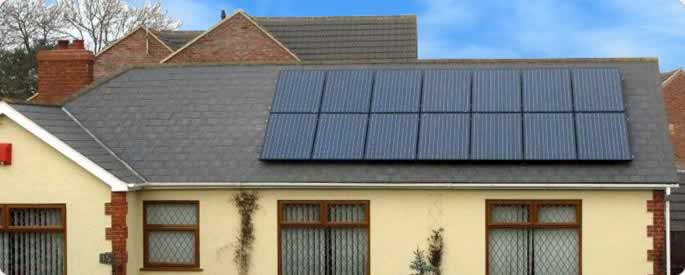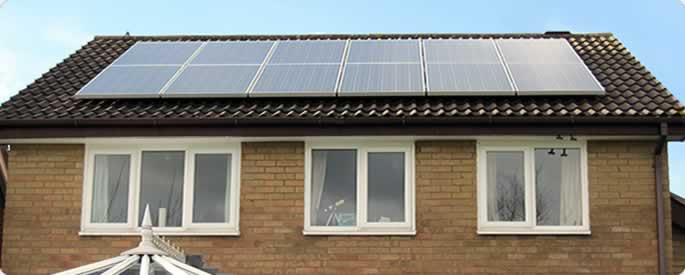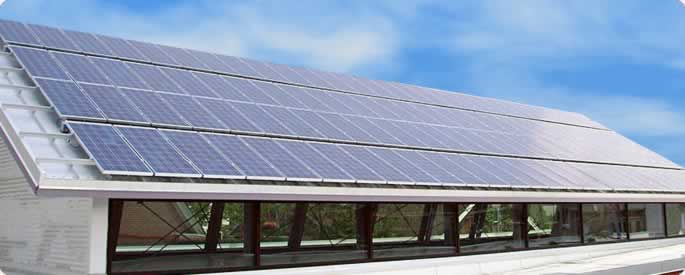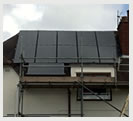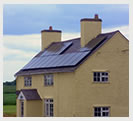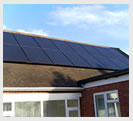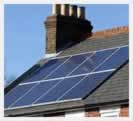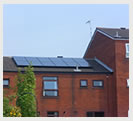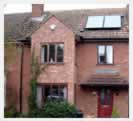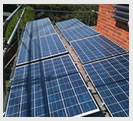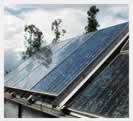INSTALLERS OF SOLAR PV PANELS. SOLAR THERMAL & INFRA RED HEATING SYSTEMS.Solar PV Panels Frequently Asked Questions
Telephone
01562 228177
Frequently asked questions Solar PV Panels
Is it solar safe?
Yes. Solar PV systems do not emit any toxic gases and there are no moving parts. A solar system is like installing another fuse board in the house. All fixing methods we employ have been approved by independent chartered structural engineers. Most roofs are 'standard'; however if your roof is in any way 'non-standard' our structural engineers will advise prior to installation.
Is my roof suitable?
A sloping roof will be suitable as long as: It faces south, south east, south west, east or west (or anything in between these). A south facing roof is best and gives the highest output. If your roof is north east, North West or north facing it will still generate power, but not enough to justify the installation from a financial point of view. A flat roof will be suitable as long as there is little or no shading. We can find a suitable means of attaching the panels to the roof (either by fixing to the underlying joists or by using free standing ballasted mounting frames).
Do I need planning permission?
Recent changes to planning law mean that a PV system on a domestic dwelling usually counts as 'permitted development' and can be installed on a sloping roof without the need for planning permission, as long as the panels project no more than 200mm from the roof surface (our panels will comply with this, as long as your installation is on a sloping roof).
If your installation is on a non-residential property, a flat roof or if your property is a flat, listed building or located in a conservation area or World Heritage site you will require listed building consent or planning consent. Please remember to tell leaseholders, freeholders, mortgagors and insurers about the planned work and remember to obtain the relevant consent.
Is the installation accredited under the Microgeneration Certification Scheme?
Yes our installers are accredited to install solar PV. Please note you MUST use an accredited installer to be able to register for feed in tariffs.
Where does Solar Abbey Technologies install?
We install nationwide. Our head office is in Stourbridge West Midlands and our installation teams operate from our Birmingham depot; however we are building a network of locally based installation teams to manage installations across the UK.
Why Abbey Solar Technologies?
We have a first class reputation for quality and service and have been in the industry for over 12 years. Over this time our sister company has acted as consultants to many blue chip clients including the BBC, Debenhams, and several local authorities and we are recognised as one of the leading advisers on renewable technologies.
How do the feed in tariffs work?
Please see our separate sheet on this. Click here. For more information please check this site: www.fitariffs.co.uk
What sort of payback time and financial return can I expect?
Based on current levels of feed in tariffs and on our current prices, calculated payback times of between 5-6 years for larger systems (2.5 kWp or larger) and 8 to 9 years for smaller systems, ( these may vary due to building orientation and shading characteristics). The income from feed in tariffs is non-taxable, making the investment very attractive. For a basic rate tax payer, the financial return is equivalent to a 25 year taxable investment paying between 11% and 12% per annum. For a higher rate (40%) tax payer, the financial return is equivalent to a 25 year taxable investment paying between 15% and 16.5%.
How long does the installation take?
On average an installation typically takes two or three days. We can usually fit your installation in within two to six weeks of receiving your signed quotation acceptance and deposit.
Will there be a lot of disruption?
Disruption is minimal. The electrical installation will take about a day and the roof panels will take one to two days depending on the size of the system. We will always leave the job clean and tidy.
Will scaffolding be required?
For most installations scaffolding will be required. For most installations our installers will bring their own scaffolding towers. For larger or more complex installations then scaffolding will have to be erected. This is to protect our workmen whilst working on the roof and to comply with health and safety legislation. In the case of 'new build' installations scaffolding is usually already in place.
Which products do you use?
We only use top quality products. Specifically we use SMA (Sunny) or Fronius inverters. SMA is a German company, Fronius is Austrian. We offer a range of panels; we can supply pretty much any panel you want. Sharp, BP Solar, Romag and Yingli are our most popular brands. All panels are accredited under the Microgeneration Certification Scheme and come with a 5 year defects warranty and a 25 year performance warranty.
Should I choose roof integrated tiles or panels?
If you are concerned about maximising financial return and maximising the power output from your roof, use panels. If you are primarily concerned about aesthetics or cannot fit panels for planning or other reasons, then consider roof tiles.
How much maintenance is required?
Very little maintenance is required for solar photovoltaic systems. On a sloping roof, panels will automatically be cleaned by the rain; in addition the glass on the panels is self-cleaning glass. As a precaution we recommend the panels should be cleaned every five years. This can usually be carried out from the ground using a low pressure washer and a long lance (no detergent or abrasives). The inverter manufacturer will typically recommend that the inverter is inspected every five years. We do offer inspection / maintenance should your require. Should you have any problems regarding the installation we will deal with the problems with no call out fee for 5 years (see our guarantee below).
How long will a solar system last?
Solar PV systems are built to last a minimum of 25 years: note that the feed in tariff is payable for 25 years, the performance warranty on the panels is 25 years (specifically guaranteeing a minimum of 80% of original performance). The roof fixings also need to be made of non corrosive materials. The system will obviously last better if it is looked after well. We recommend a five yearly maintenance with panel cleaning and inverter inspection. The inverter is guaranteed for 10 years although it is expected to last longer and extended warranties are available at additional cost.
What guarantees do you offer?
All panels are accredited under the Microgeneration Certification Scheme and are guaranteed by the manufacturer to at least 80% performance after 25 years. Inverters are guaranteed for 5 years (an extended warranty is available on the inverter at extra cost). We give a 5 year workmanship warranty. In addition we guarantee to investigate and rectify any query or complaint about your system in the first 5 years free of charge, with no call out fee.
Save £'s with Led Lighting
Save hundreds of £'s a year on electricity bills by simply by switching your lighting over to Led Bulbs.
Visit Our Led Discount Shop
Our PV Suppliers
Customer Testimonials
Brian Whitehouse
"Just to say I would thoroughly recommend Abbey Solar if you were thinking of installing a solar panel system. It was completed in a day and with no fuss or traumas"
Stourbridge
Mr Hemming
"It was a pleasure dealing with Abbey. They were very professional and did not employ the double-glazing tactics unlike the other companies we had round"
Kingswinford
Roger Penn
"The salesman from Abbey was very knowledgeable about all aspects of renewable technologies and gave all the information we needed to make a decision about whether to proceed"
Kidderminster
Dr Singh
"Abbey did a superb job on our property and I would recommend them to anyone considering having a solar installation"
Wolverhampton
Mr Hateley
"We had our PV system installed by Abbey and I would have no hesitation in recommending them to everybody"
Birmingham
Daniel Johnson
"We installed a 10kW system. The system performs better than Abbey said it would and we would use them again – in fact we had infra red installed as well"
Hagley
Typical Solar Income
Terraced 2 Bedroom House
- 2kWp System.
- 8x 250w Panels.
- Income over 25 years £29.061
- Investment return by year 9.
Semi Detached 3 Bedroom House
- 3kWp System.
- 12x 250w Panels.
- Income over 25 years £43.591.
- Investment return by year 8.
Detached 4 Bedroom House
- 4kWp System.
- 16x 250w Panels.
- Income over 25 years £58.122.
- Investment return by year 7.
